DIY: HTPC with external video card
Good afternoon, habravchane! Thank you very much for the invite!
My name is Aleksey. I have a problem with hearing, but this does not interfere with writing here.
I want to share my project. This is a compact computer of the size of 196x190x62 mm with an external video card. True, the video card is not a low-end class, but a high-end one. All work took about 2 weeks.
Attention, under the cut a lot of pictures!
I will tell in order. The idea came when 2 computers took up a lot of space on the table.
The first computer is designed for everyday use.
Characteristics of the 1st computer:
2nd computer ... I got sick with bitcoin and mining. About bitcoin mining will not be issued in detail, because here in habr about bts there is enough article.
On the motherboard were 3 video cards. These are AMD Radeon HD 7870, 7950 and 6930. I bought the last video card for the first time using a cryptocurrency from a friend. For 8 bts at a course ~ 500r. Because of today's currency exchange rate, I am already starting to regret what I bought.
')
Characteristics of the 2nd computer:
Dimensions of 3 video cards do not allow them to fit into the ATX-case, and we had to bring the components to the open air. By the way, the computer looked spectacular when open.
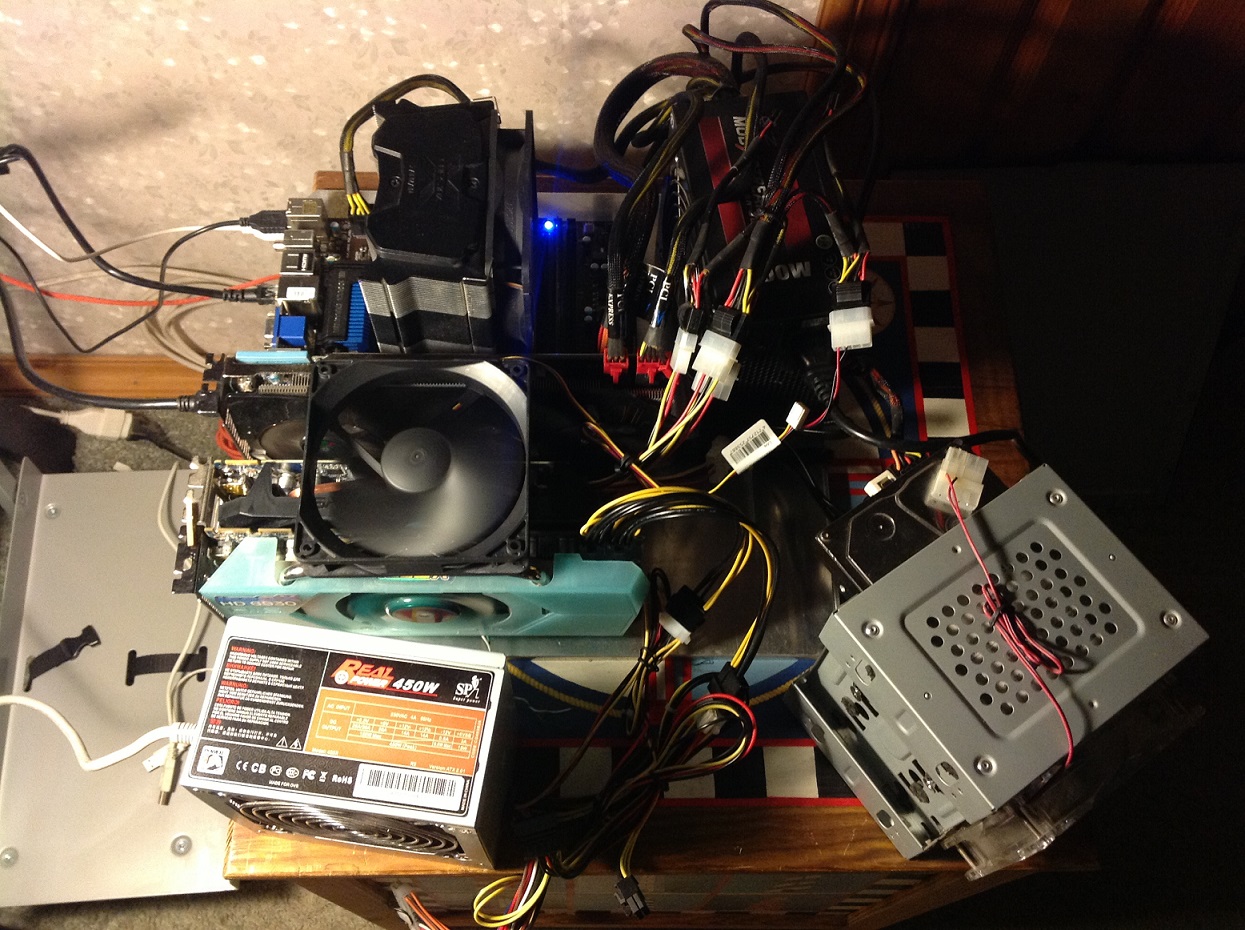
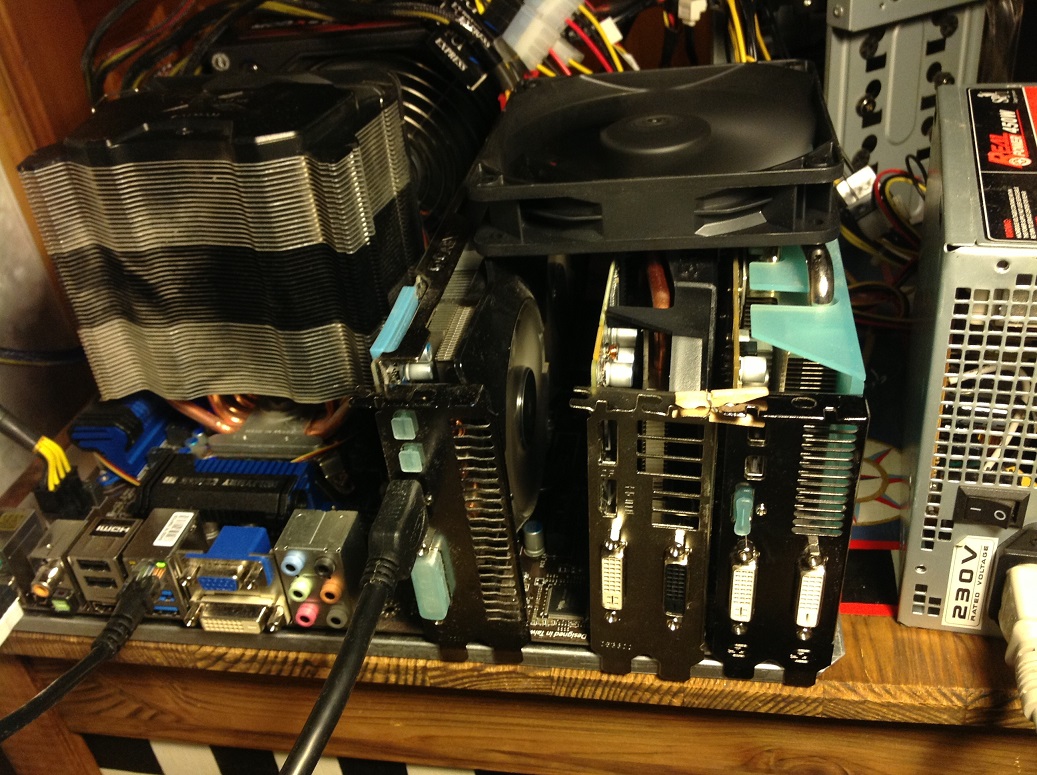
I used the computer as heating when the heating battery did not work well in the winter season.
A year later, mining became unprofitable, and I seriously began to think about a compact computer, so that the size was like a Mac mini. Here the problem was the large size of the usual BP. Minutes of googling and found a solution!
These are miniature picoPSU-120W mini-box voltage converters with AC DC 12V in size slightly smaller than a payment card and an external power supply unit (like a laptop) at 120W. Tested on mini-ITX mat. Board - works great! Later I bought a Morex Cubid 557B Black case without a power supply unit with a size of 196x190x62 mm made in Taiwan. Qualitatively done without sharp edges.
During assembly, there was a problem with the installation of the fan. Due to the internal thickness of the system unit, conventional fans could not fit (only 37 mm in height). About the dimensions of the fans in the price lists of stores write rarely. I had to scour my own shopping.
Chose the fan GlacialTech Igloo i630 36 mm thick. I stuffed everything in the HTPC.
Components:
Go!
First, I installed MacOS 10.8.2 (Hakintosh) on my computer, and later a month later I switched back to Windows 7.
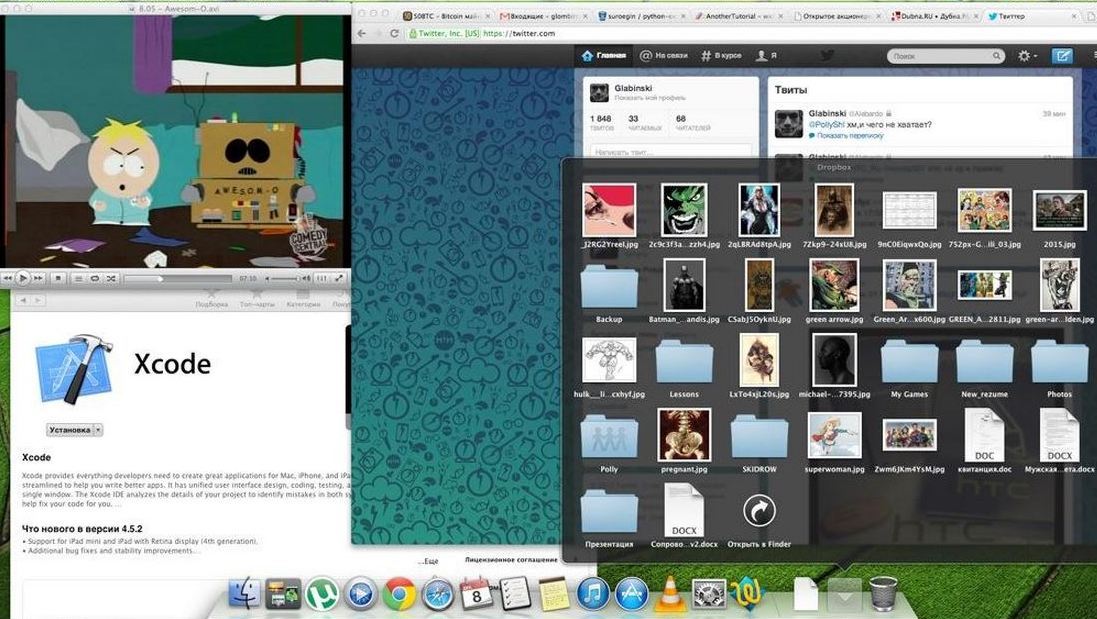
Programs, HD movies - everything on HTPC was great, but ... I love PC games! The Intel HD4000 graphics card integrated into the processor did not allow to enjoy games with normal graphics. I could not only play, but also work calmly with CAD programs.
The idea of creating an external video card came when I found out on the Internet that there are extenders for video cards for PCI-Express 16x. This is a PCI-Express riser card. Ordered and brought.
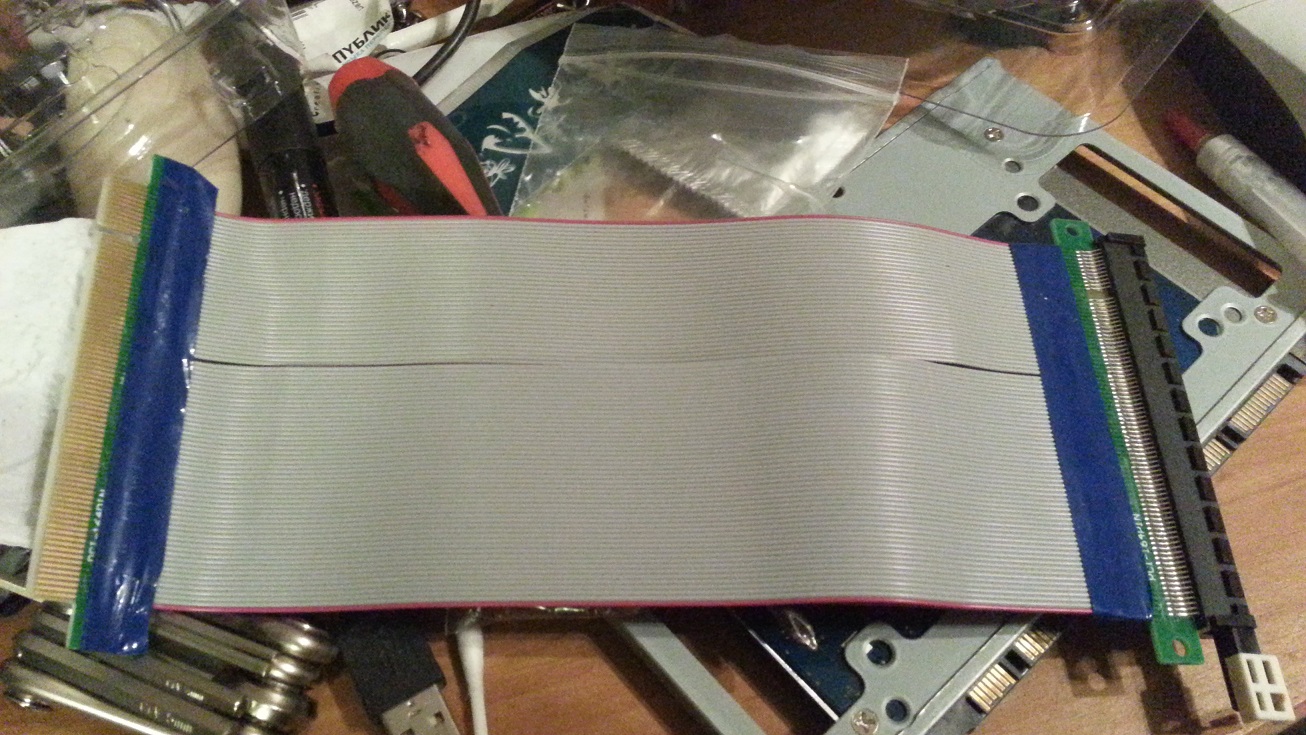
He took the dremel, glasses and began to cut the case. I made a slot on the case so that the extension can fit in the HTPC. Hid scratches on the body with a black marker.

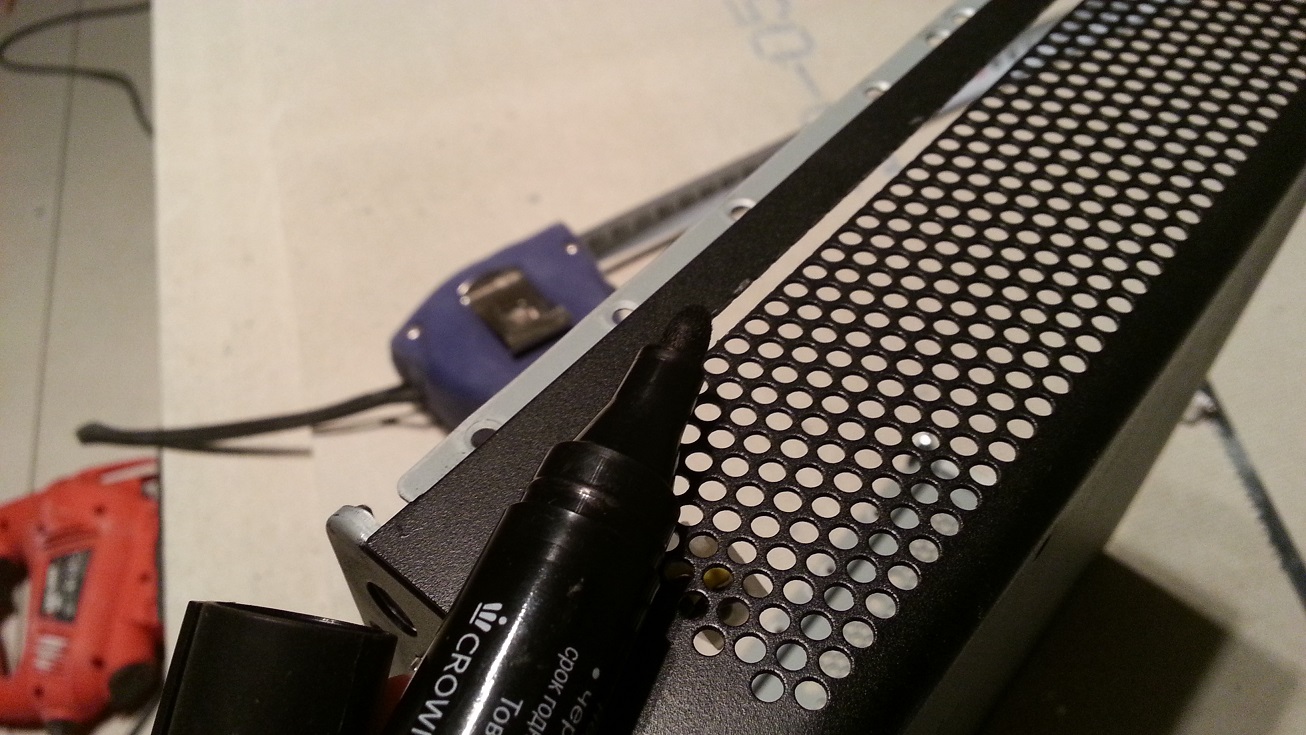
Connected to the PCI-Express 16x port on the mat. board and mission completed!

He took two video cards from the shelf: the Palit GTX550Ti of a small size and a hefty Radeon HD7950 from the past mining. They need extra nutrition. I chose a budget power supply unit 500W OCZ 500MXPS with disconnecting cables (except for the power cable to the motherboard).
On SolidWorks, I quickly modeled a 3D model for attaching a video card to a power supply unit. The case for the video card and the PSU is made of a transparent box from IKEA. He also drilled 4 holes on the aluminum corner (2 - for mounting the PSU and 2 - for the video card).
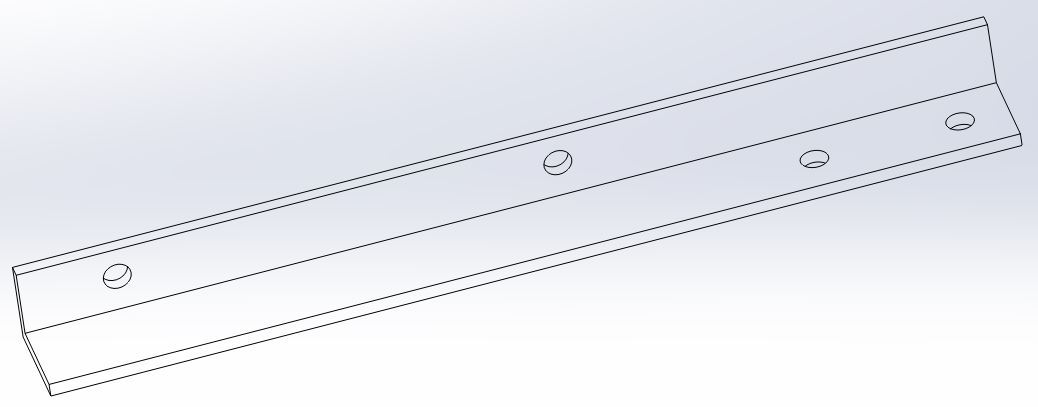
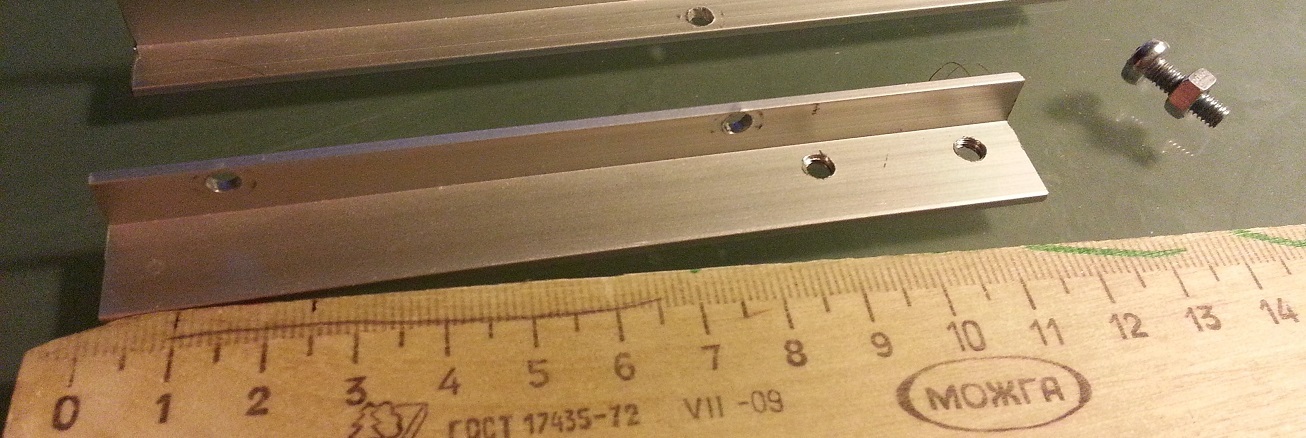
I put the AMD Radeon HD7950 graphics card over the PSU and secured with a screw and nut. The disadvantage is weight. Due to the weight of the video card, the installation bracket was slightly bent; I had to replace it with a lighter video card from nVidia (Palit GTX550Ti) in order not to risk. I made a contact between the green and black wires in the power supply unit, so that the power supply unit supplies the video card with power regardless of the HTPC. Put in the case from IKEA.

Launched HTPC. Went to boot the system to the workstation, put the latest driver. Installation and reboot went smoothly, but when I started the game, the monitor began to fade and after 5 seconds - back to the desktop. A pop-up notification that the video card is working in the wrong mode. I installed different versions of the drivers, even replaced the nVidia video card with a “heavy” AMD card. Between the video card and the power unit, I put the leg in order to distribute part of the weight on it. I got rid of the case because it was poorly ventilated. Again no way. First, a PCI-Ex extension cable blamed the damage. I had a thought that after cutting the case, sharp edges remained on the gap, which could leave deep scratches on the extension cord. Stupidly felt the wires, but nothing changed.
While working with the HTPC I heard a strange crackle. I disassembled the case and see that the CPU fan had 2 blades falling off. Apparently, touched on a nearby hard drive. Back to the store, I bought only the recently released Zalman CNPS 2X cooler with a thickness of 27 mm. Well put.
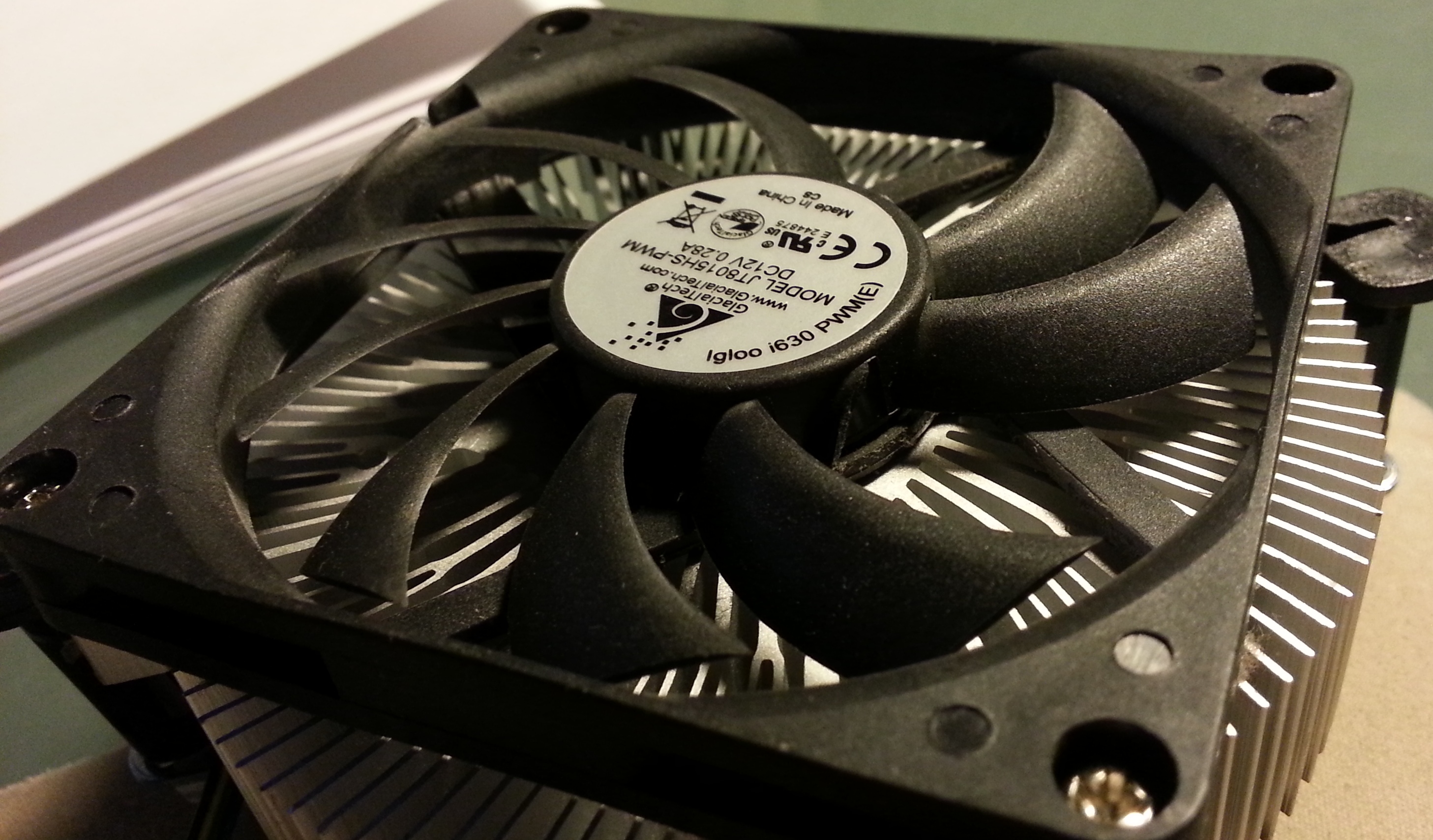
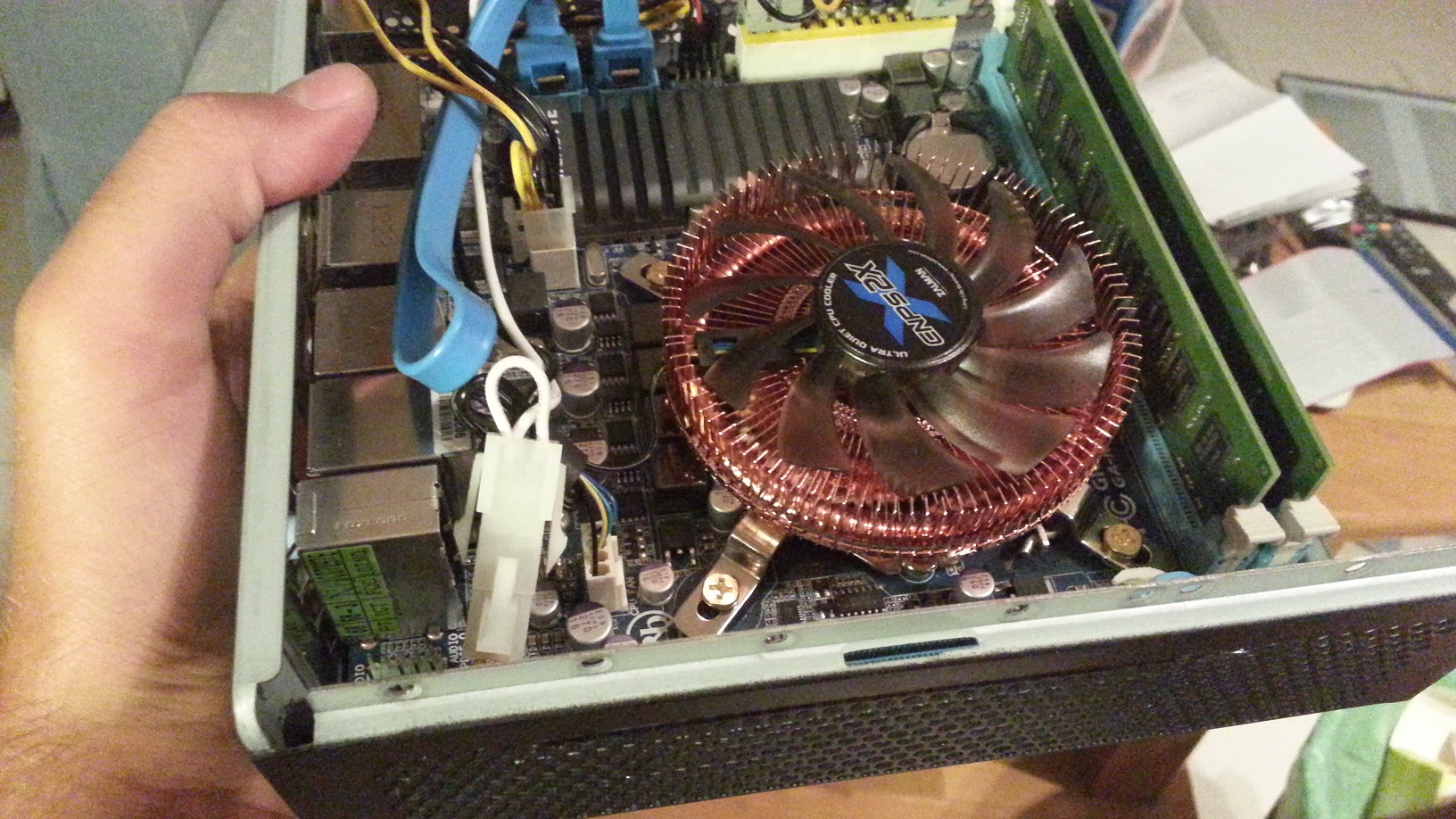
Dremel made the slot on the case wider and put 2 gaskets between the edges.
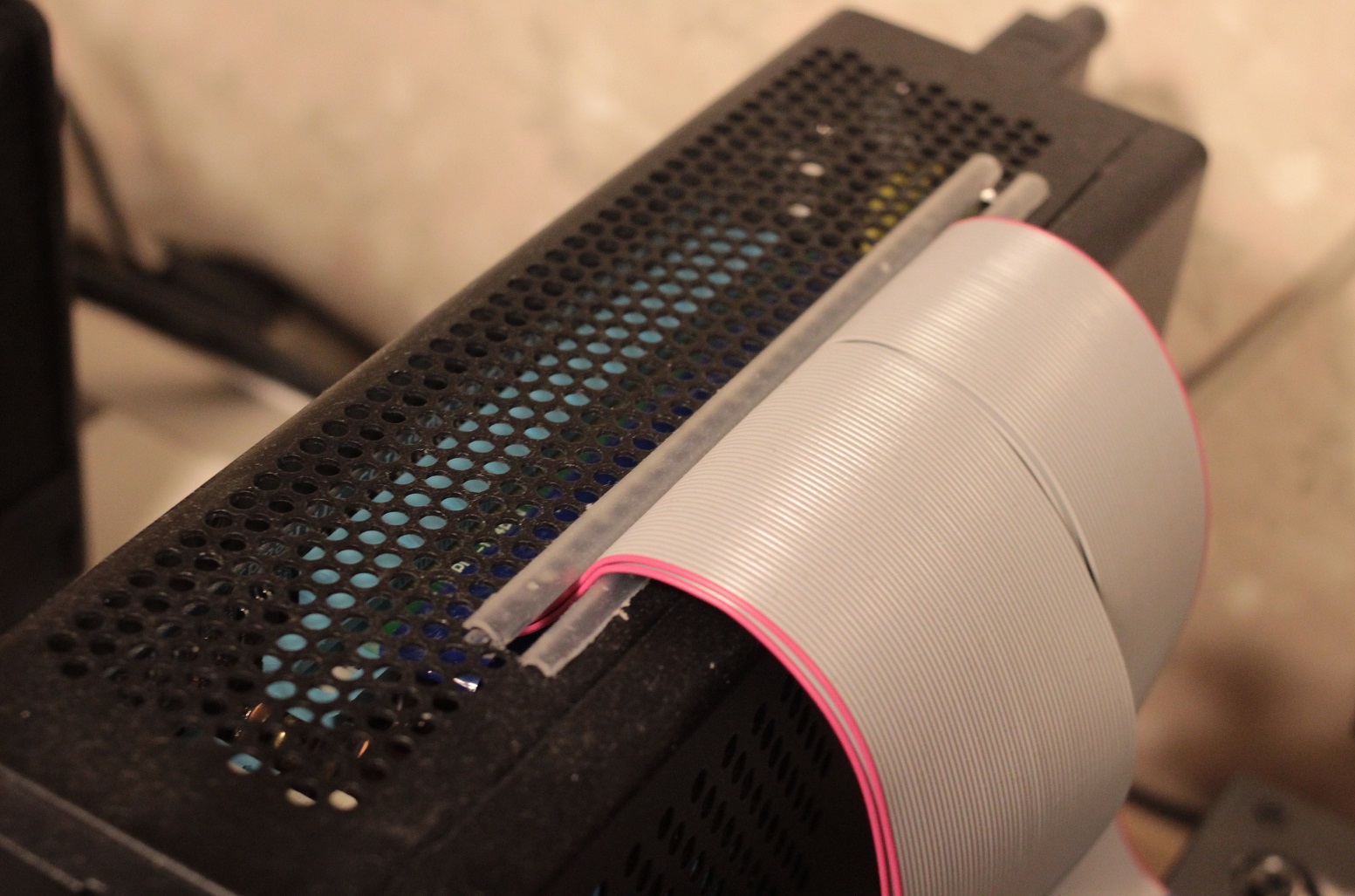
Put a new PCI-Ex extender. Did not work out. Puzzled and googled. 404 per page.
But the funny thing is that I forgot about the BIOS. I remembered, I decided to enter the BIOS and searched for all the connections with the video card. No, go dance with a tambourine. Later in the BIOS, the mysterious parameter EuP2013 came across. This is Energy Using Product (EuP / ErP). Parameter EuP2013 allows you to make the system in the off state consumed less than 1 watt. Designed by the European Union to save energy.
The EuP2013 parameter has been disabled in BIOS. I started the game and the problem with the ill-fated extinction of the monitor evaporated. Mountain with a shoulder.
In the end, what happened.
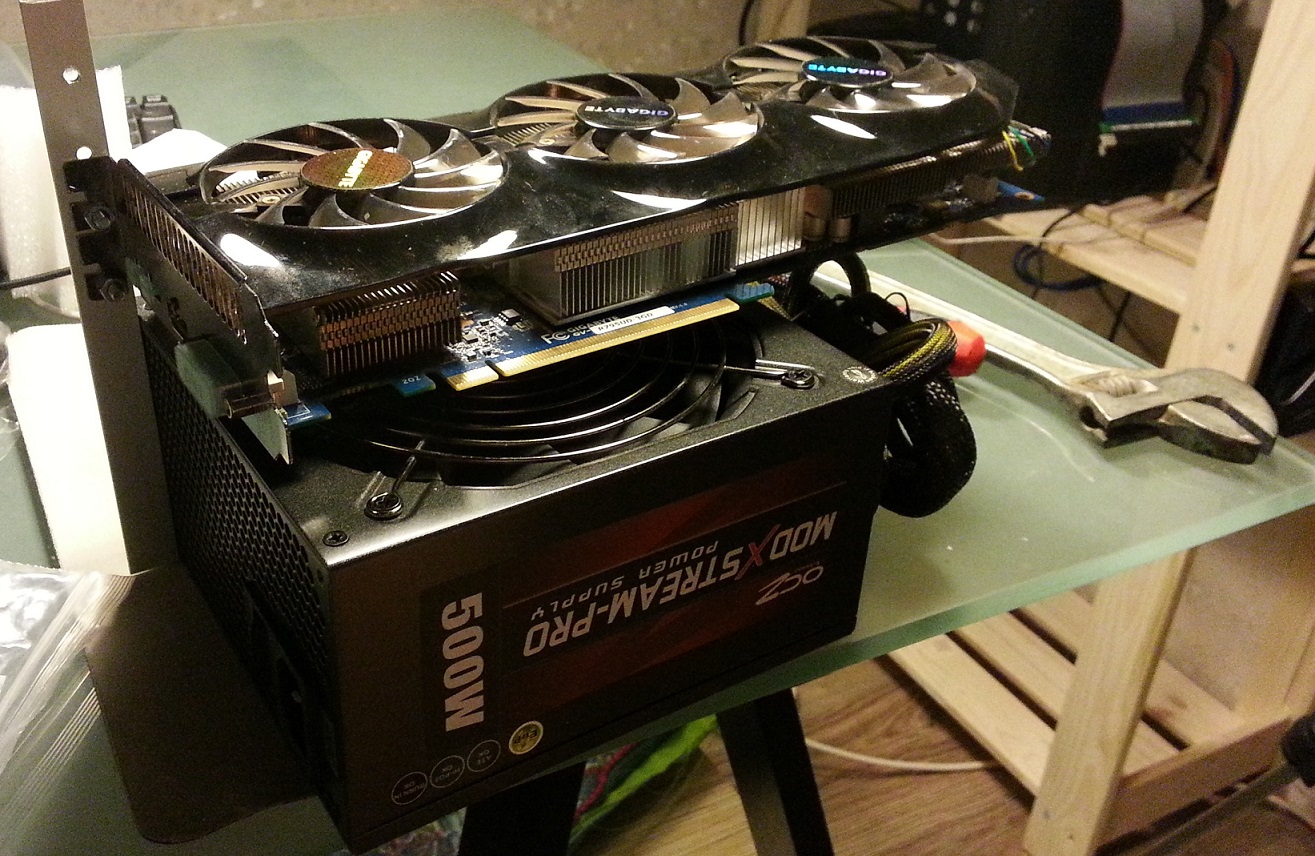
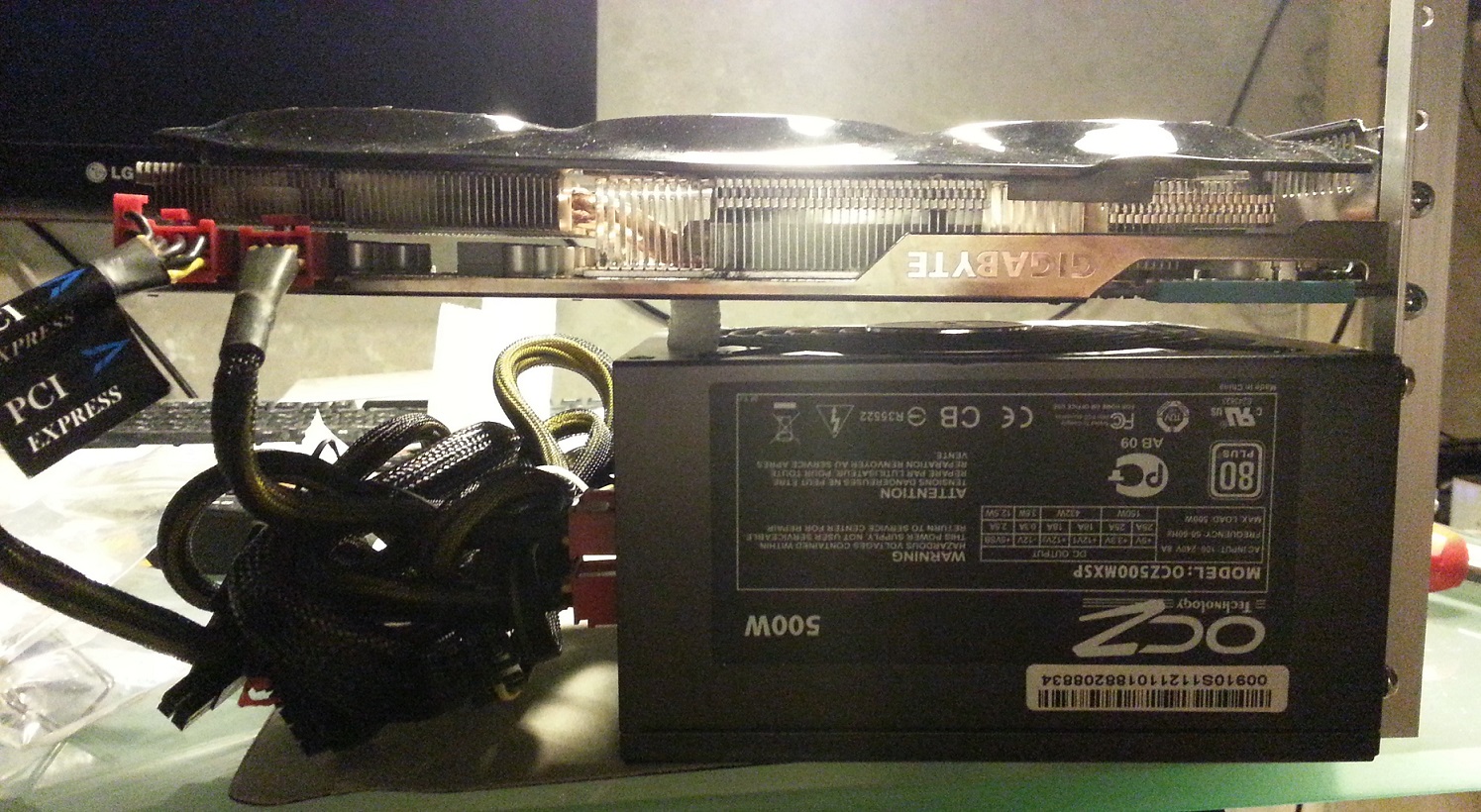

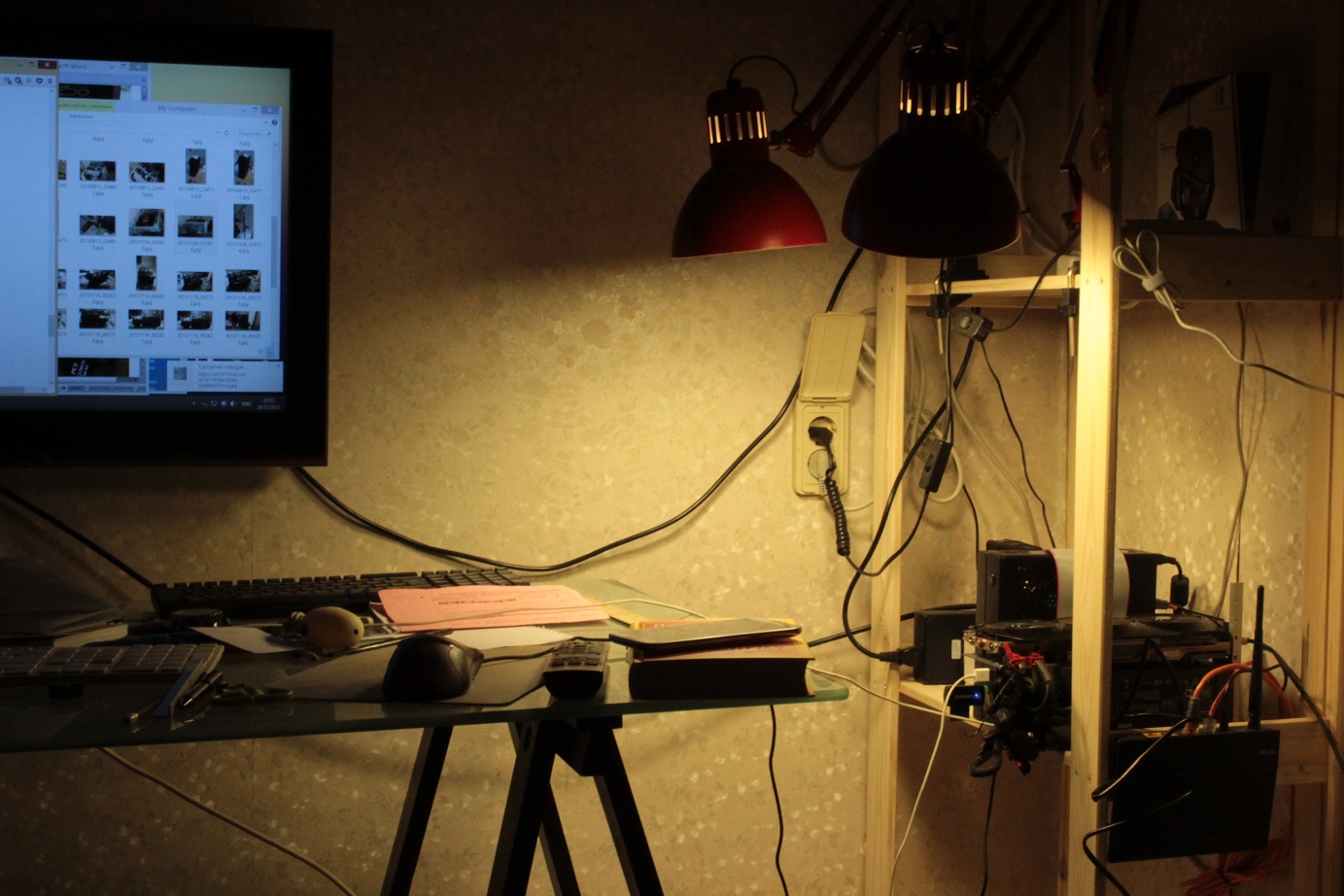
I heard that in the PCI-Ex 16x extension cable, the skip speed is limited and this prevents the game process. But my test shows that playing with maximum settings is excellent! On battfield 4 tested.
By the way, the computer is very quiet, and this is an important factor. And yet, due to the location of the video card between the PSU, the GPU temperature under load is 57C!

Thanks for attention! Hope you were interested.
PS: I noticed that after turning off the system unit on the nVidia video card, the cooling system continues to work. Maybe it's the old version, because the new generation did not set. The AMD Radeon HD7950 doesn't have this problem.
My name is Aleksey. I have a problem with hearing, but this does not interfere with writing here.
I want to share my project. This is a compact computer of the size of 196x190x62 mm with an external video card. True, the video card is not a low-end class, but a high-end one. All work took about 2 weeks.
Attention, under the cut a lot of pictures!
History and HTPC.
I will tell in order. The idea came when 2 computers took up a lot of space on the table.
The first computer is designed for everyday use.
Characteristics of the 1st computer:
- Corps: ATX Zalman Z9.
- MB: mini-ITX Gigabyte GA-H61N-USB3
- CPU: intel i3-2100
- RAM: 8Gb DDR3 1333 Mhz Samsung
- GPU: AMD Radeon HD 6670
- SSD: 90 Gb OCZ Vertex 3
- 3'5 HDD: 1 Tb HDD Hitachi
2nd computer ... I got sick with bitcoin and mining. About bitcoin mining will not be issued in detail, because here in habr about bts there is enough article.
On the motherboard were 3 video cards. These are AMD Radeon HD 7870, 7950 and 6930. I bought the last video card for the first time using a cryptocurrency from a friend. For 8 bts at a course ~ 500r. Because of today's currency exchange rate, I am already starting to regret what I bought.
')
Characteristics of the 2nd computer:
- MB: MSI Z77-G45
- CPU: Intel Core i3-3225
- RAM: 8Gb DDR3 1333 Mhz Samsung
- GPU: AMD Radeon HD 7870, 7950 and 6930
- SSD: 60 Gb OCZ Vertex 3
- 2'5 HDD: 500 Gb Seagate ST9500325AS
- 2 power supplies (450W + 550W)
Dimensions of 3 video cards do not allow them to fit into the ATX-case, and we had to bring the components to the open air. By the way, the computer looked spectacular when open.


I used the computer as heating when the heating battery did not work well in the winter season.
A year later, mining became unprofitable, and I seriously began to think about a compact computer, so that the size was like a Mac mini. Here the problem was the large size of the usual BP. Minutes of googling and found a solution!
These are miniature picoPSU-120W mini-box voltage converters with AC DC 12V in size slightly smaller than a payment card and an external power supply unit (like a laptop) at 120W. Tested on mini-ITX mat. Board - works great! Later I bought a Morex Cubid 557B Black case without a power supply unit with a size of 196x190x62 mm made in Taiwan. Qualitatively done without sharp edges.
During assembly, there was a problem with the installation of the fan. Due to the internal thickness of the system unit, conventional fans could not fit (only 37 mm in height). About the dimensions of the fans in the price lists of stores write rarely. I had to scour my own shopping.
Chose the fan GlacialTech Igloo i630 36 mm thick. I stuffed everything in the HTPC.
Components:
- Body: Morex Cubid 557B Black
- MB: Gigabyte GA-H61N-USB3
- CPU: Intel Core i3-3225
- GPU: Intel HD4000
- RAM: 8Gb DDR3 1333 Mhz Samsung
- SSD: 60 Gb Crucial CT256M4SSD2
- 2'5 HDD: 500 Gb Seagate ST9500325AS
Go!
First, I installed MacOS 10.8.2 (Hakintosh) on my computer, and later a month later I switched back to Windows 7.

Programs, HD movies - everything on HTPC was great, but ... I love PC games! The Intel HD4000 graphics card integrated into the processor did not allow to enjoy games with normal graphics. I could not only play, but also work calmly with CAD programs.
External PCI-Express connector for HTPC.
The idea of creating an external video card came when I found out on the Internet that there are extenders for video cards for PCI-Express 16x. This is a PCI-Express riser card. Ordered and brought.

He took the dremel, glasses and began to cut the case. I made a slot on the case so that the extension can fit in the HTPC. Hid scratches on the body with a black marker.


Connected to the PCI-Express 16x port on the mat. board and mission completed!

Video card and power supply.
He took two video cards from the shelf: the Palit GTX550Ti of a small size and a hefty Radeon HD7950 from the past mining. They need extra nutrition. I chose a budget power supply unit 500W OCZ 500MXPS with disconnecting cables (except for the power cable to the motherboard).
On SolidWorks, I quickly modeled a 3D model for attaching a video card to a power supply unit. The case for the video card and the PSU is made of a transparent box from IKEA. He also drilled 4 holes on the aluminum corner (2 - for mounting the PSU and 2 - for the video card).


I put the AMD Radeon HD7950 graphics card over the PSU and secured with a screw and nut. The disadvantage is weight. Due to the weight of the video card, the installation bracket was slightly bent; I had to replace it with a lighter video card from nVidia (Palit GTX550Ti) in order not to risk. I made a contact between the green and black wires in the power supply unit, so that the power supply unit supplies the video card with power regardless of the HTPC. Put in the case from IKEA.

Dance with a tambourine.
Launched HTPC. Went to boot the system to the workstation, put the latest driver. Installation and reboot went smoothly, but when I started the game, the monitor began to fade and after 5 seconds - back to the desktop. A pop-up notification that the video card is working in the wrong mode. I installed different versions of the drivers, even replaced the nVidia video card with a “heavy” AMD card. Between the video card and the power unit, I put the leg in order to distribute part of the weight on it. I got rid of the case because it was poorly ventilated. Again no way. First, a PCI-Ex extension cable blamed the damage. I had a thought that after cutting the case, sharp edges remained on the gap, which could leave deep scratches on the extension cord. Stupidly felt the wires, but nothing changed.
While working with the HTPC I heard a strange crackle. I disassembled the case and see that the CPU fan had 2 blades falling off. Apparently, touched on a nearby hard drive. Back to the store, I bought only the recently released Zalman CNPS 2X cooler with a thickness of 27 mm. Well put.


Dremel made the slot on the case wider and put 2 gaskets between the edges.

Put a new PCI-Ex extender. Did not work out. Puzzled and googled. 404 per page.
But the funny thing is that I forgot about the BIOS. I remembered, I decided to enter the BIOS and searched for all the connections with the video card. No, go dance with a tambourine. Later in the BIOS, the mysterious parameter EuP2013 came across. This is Energy Using Product (EuP / ErP). Parameter EuP2013 allows you to make the system in the off state consumed less than 1 watt. Designed by the European Union to save energy.
The EuP2013 parameter has been disabled in BIOS. I started the game and the problem with the ill-fated extinction of the monitor evaporated. Mountain with a shoulder.
In the end, what happened.




I heard that in the PCI-Ex 16x extension cable, the skip speed is limited and this prevents the game process. But my test shows that playing with maximum settings is excellent! On battfield 4 tested.
By the way, the computer is very quiet, and this is an important factor. And yet, due to the location of the video card between the PSU, the GPU temperature under load is 57C!

Thanks for attention! Hope you were interested.
PS: I noticed that after turning off the system unit on the nVidia video card, the cooling system continues to work. Maybe it's the old version, because the new generation did not set. The AMD Radeon HD7950 doesn't have this problem.
Source: https://habr.com/ru/post/206960/
All Articles